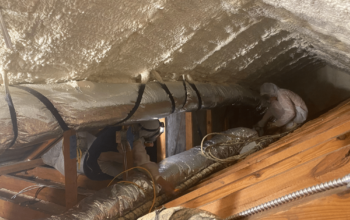Here are some top tips for those starting a plastering project.These steps will help you to keep on track and get the most out of your project, with a great, longlasting finish.
Tip 1. Prepare and Manage the Suction Prior to Starting
Avoid moisture from drawing out of the plaster you’re applying by managing the suction. Both backing and skim coats need this treatment.
Tip 2. Working with a sand-based backing coat
There are numerous benefits of employing sand and cement production::
- It enables you to use it for the entire day.
- There’s no need to hurry since each mix takes around 10 minutes.
- It is also less prone to float, so the float will take care of any holes or roughness on the surface.
Tip 3. Apply Two Coats
The first layer should be thin, and only used to ensure that the wall adheres and that it’s firmly driven into the surface with a lot of pressure.
Make sure you fill in all of the gaps before adding the final layer to prevent it from peeling later. To guarantee this, apply an adequate and even thickness, allowing for equal pressure and a slight overlap. It’s also worth noting that while these things can be managed in tandem, moisture is the only exception.
Make sure the first thin layer is moist and flexible when applying the second coat, and you’ll be amazed at how little effort it takes. Even if the second layer is a little ahead of the first, as long as you allow adequate drying time between coats and maintain sufficient suction, it will look good.
A second coat can be as thick as required, with less effort but enough to keep it flat.
Tip 4. Keep it flat.
The backing coat needs to be flat. Achieving a beautiful finish will be difficult if the topcoat is not smooth.
Make sure all surfaces are totally flat, and the wall as a whole will look great, even if you do nothing else with it when plaster beading.
Tip 5. Focus on Corners
Corners that are less than 90 degrees should be sanded and polished. When a straight edge is held vertically, the top and bottom of the board should be flat; when it’s horizontal, they should be perfectly level.
Corners should always be perfectly straight and aligned with adjacent walls or frames.
Tip 6. Cut back with a Trowel
A trowel is the simplest way to do this. Run a flat trowel over the wall after it has hardened (never perform this when plaster is soft). Make sure the corner of your trowel runs all the way to the corners and eliminate any tiny bulges into the corners by just slightly trimming into the adjacent wall or ceiling with your trowel’s blade.
Tip 7. Make it thinner
Mix the finish plaster somewhat thicker when spreading with a sponge since it will be difficult to keep flat, and your arm will hurt after a while. It should be thin enough that when you draw lines through it, it resembles a thick yoghurt. After that, it will spread more readily to form a thin layer no more than 2 mm thick.
Related Posts












